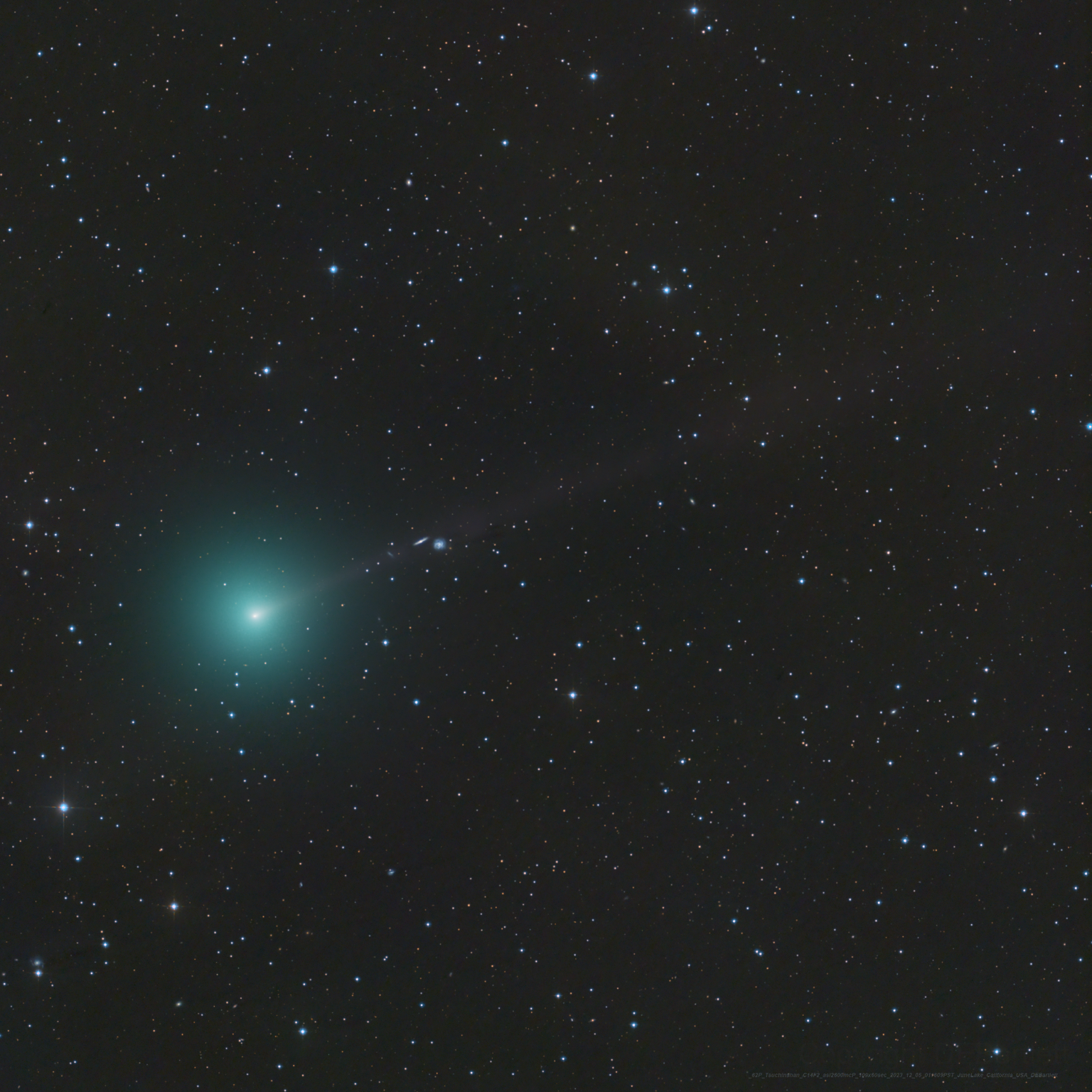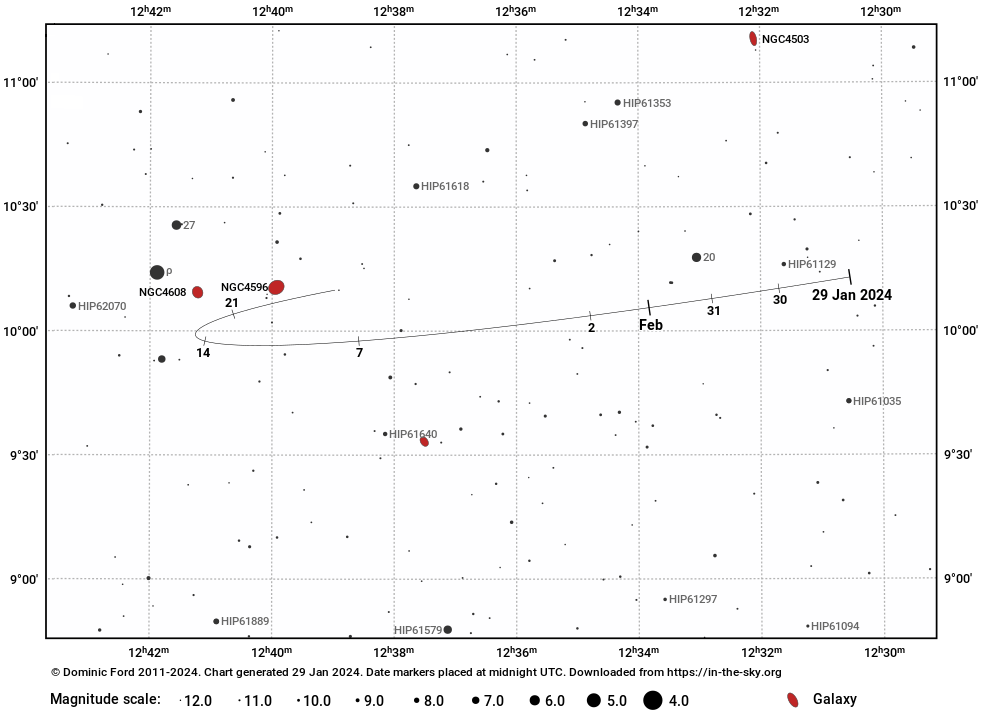It often happens that the moment of approaching our planet of some celestial body turns out to be “spoiled” because of the Moon, the radiance of which does not allow us to fully observe weak objects. This was exactly what happened to comet Tsuchinshan-1 (62P/Tsuchinshan), which flew from us at a distance of 0.497 AU (74 million km) on January 29, 2024. On the same day, our natural satellite was in the sky at 12° from it. But in the following days, its phase will decrease sufficiently, and we will be able to see how the “tailed guest” is moving away from the Sun and Earth, gradually losing its brilliance.
On January 11, comet Tsuchinshan-1 is moving along the constellation Virgo in the same direction as the Sun and Moon are moving along the celestial sphere. On February 16, it will pass the standing point — from Earth it will look as if the movement of the object against the background of stars has changed from “correct” to the opposite. At the same time, its brilliance will drop to about the 10th magnitude. In such conditions, it will be possible to observe the “tailed star” only under favorable atmospheric conditions in places far from sources of artificial illumination, using telescopes with a lens diameter of more than 100 mm.

Two days later, the Moon will reappear in the “dangerous” vicinity of the comet, and it will become very difficult to see it. 62P/Tsuchinshan will enter into opposition to the Sun on March 24, by which time its brightness will drop to the 11th magnitude. The next time it will return to the inner regions of the Solar System in 2030. But it will fly closer to Earth than it is now in January 2088, when, thanks to gravitational perturbations, its perihelion will “descend” even closer to Earth’s orbit.

However, if humanity builds a permanent settlement on Mars by the middle of the XXI century, comet Tsuchinshan-1 will present a rare sight to its inhabitants: On April 1, 2049, according to the Earth’s chronology, it will approach the Red Planet at a distance of 0.016 AU (2.4 million km) — this is only six times the average radius of the lunar orbit. Observers on the Martian surface will see it as a large greenish nebula, the total brilliance of which will reach the second magnitude, that is, it will be perfectly visible to the naked eye — of course, through the glass of the spacesuit…
Meanwhile, the Pons-Brooks comet continues to approach the Sun and the Earth!
Follow us on Twitter to get the most interesting space news in time
https://twitter.com/ust_magazin


